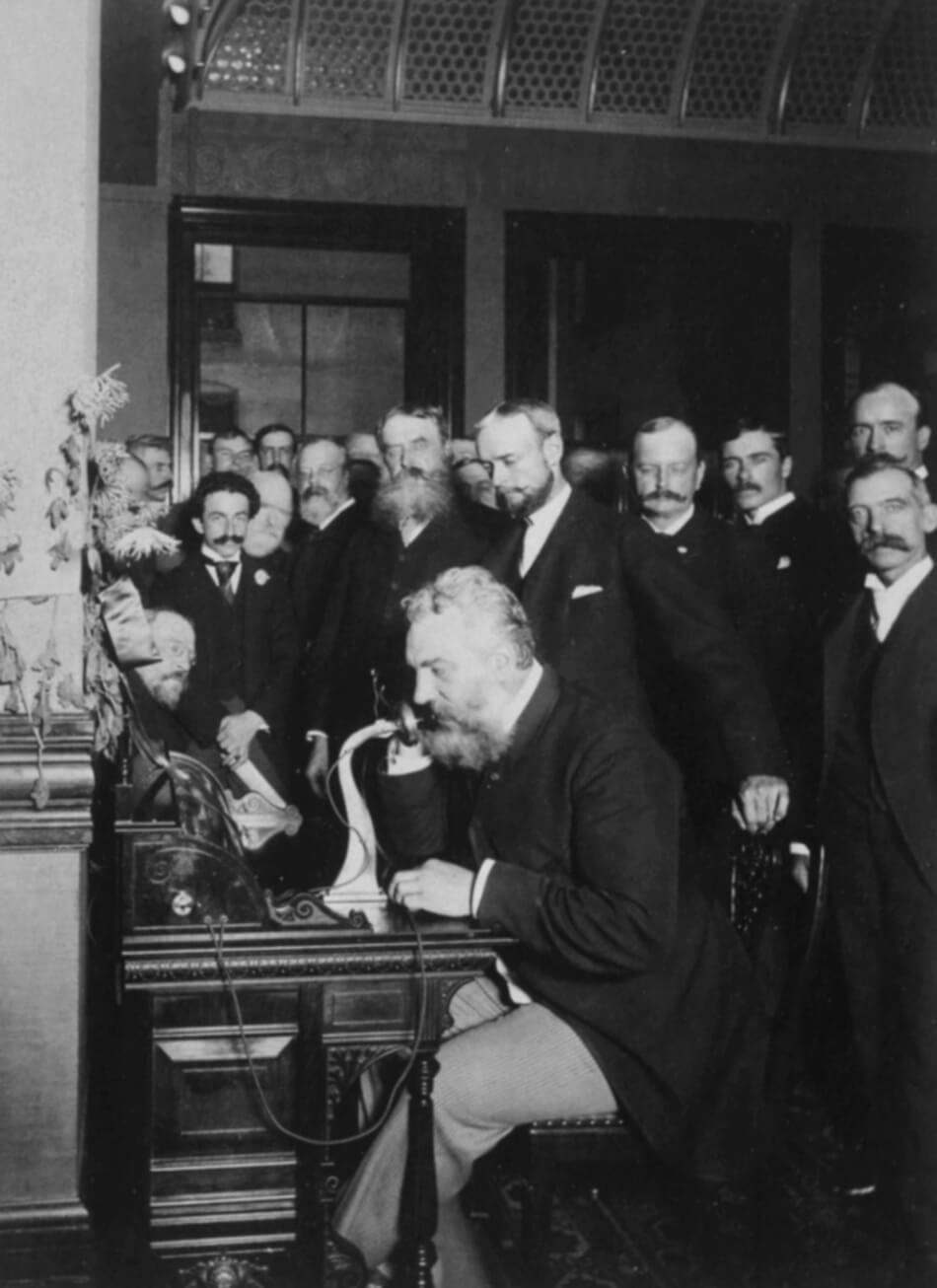Alexander Graham Bell’s paper “Researches in Telephony” was presented at a Stated Meeting of the Academy on May 10, 1876. In it he considers the “three varieties of currents”–intermittent, pulsatory, and undulatory–that produce telephonic effects, and he also describes one of his experiments. Two months before the presentation, on March 7, 1876, Bell received Patent Number 174,465, often called the most valuable single patent in history.
(Reprinted from the Proceedings of the American Academy of Arts and Sciences, 1876, volume 12).

When a permanent magnet is caused to vibrate in front of the pole of an electro-magnet, an undulatory or oscillatory current of electricity is induced in the coils of the electro-magnet, and sounds proceed from the armatures of other electro-magnets placed upon the circuit.... Two single-pole electro-magnets, each having a resistance of ten ohms, were arranged upon a circuit with a battery of five carbon elements. The total resistance of the circuit, exclusive of the battery, was about twenty-five ohms. A drumhead of gold-beater’s skin, seven centimetres in diameter, was placed in front of each electro-magnet, and a circular piece of clockspring, one centimetre in diameter, was glued to the middle of each membrane. The telephones so constructed were placed in different rooms. One was retained in the experimental room, and other taken to the basement of the adjoining house.
Upon singing into the telephone, the tones of the voice were reproduced by the instrument in the distant room. When two persons sang simultaneously into the instrument, two notes were emitted simultaneously by the telephone in the other house. A friend was sent into the adjoining building to note the effect produced by articulate speech. I placed the membrane of the telephone near my mouth, and uttered the sentence, “Do you understand what I say?” Presently an answer was returned through the instrument in my hand. Articulate words proceeded from the clock-spring attached to the membrane, and I heard the sentence: “Yes; I understand you perfectly.”
The articulation was somewhat muffled and indistinct, although in this case it was intelligible. Familiar quotations, such as “To be, or not to be; that is the question,” “A horse, a horse, my kingdom for a horse,” “What hath God wrought,” (ampersand)c., were generally understood after a few repetitions. The effects were not sufficiently distinct to admit of sustained conversation through the wire.... Occasionally, however, a sentence would come out with such startling distinctness as to render it difficult to believe that the speaker was not close at hand. No sound was audible when the clock-spring was removed from the membrane.
The elementary sounds of the English language were uttered successively into one of the telephones and the effects noted at the other. Consonantal sounds, with the exception of L and M, were unrecognizable. Vowel-sounds in more cases were distinct. Diphthongal vowels, such as a (in ale), o (in old), i (in isle), ow (in now), oy (in boy), oor (in poor), oor (in door), ere (in here), ere (in there), were well marked.
Triphthongal vowels, such as ire (in fire), our (in flour), ower (in mower), ayer (in player), were also distinct. Of the elementary vowel-sounds, the most distinct were those which had the largest oral apertures. Such were a (in far), aw (in law), a (in man), and e (in men).